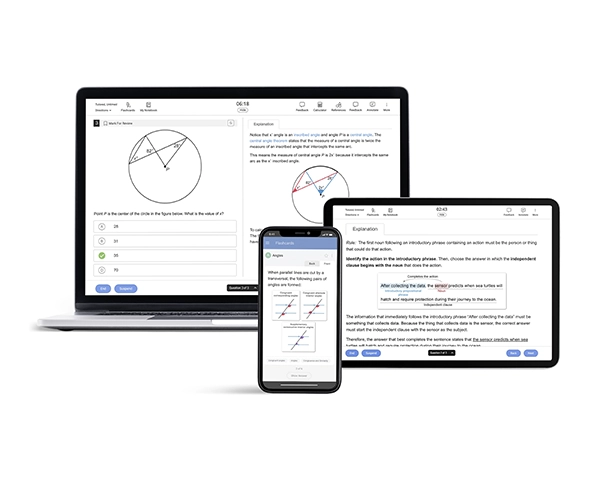If you’re thinking about a future in business, marketing, finance, data analytics, or even healthcare, statistics will show up again and again. AP Statistics introduces you to critical skills like analyzing trends, making predictions, and testing results—skills that are vital in the real world.
The watch, read, and practice AP Statistics method helps you learn actively and efficiently, without wasting time. Here’s how it works:
Why Prep for AP Statistics Over the Summer?
Jumping into AP Statistics for the first time can feel overwhelming. There’s a lot of new vocabulary, formulas, and data interpretation techniques to master. A little summer study can make a huge difference.
Benefits of Summer Prep:
- Build a strong foundation in probability, data collection, and inference
- Reduce stress once classes start
- Improve your in-class performance and confidence
- Boost your chances of scoring a 5 on the AP exam
- Develop real-world skills you’ll use in college and career
Spending just a few hours a week can give you a major advantage.
The “Watch, Read, Practice” Method for AP Statistics
Step 1: Watch – Master Stats Concepts with Short Video Lessons
Start each study session with our AP Statistics video lessons. These quick videos explain the big ideas behind the math and walk you through real-world examples you’ll actually remember.
Topics to Prioritize Early:
- Types of data and sampling methods
- Descriptive statistics (mean, median, standard deviation)
- Probability rules and simulations
Each video focuses on one concept, so you can move at your own pace and truly understand the material.
Step 2: Read – Deepen Understanding with the Study Guide
After watching, open our AP Statistics Study Guide. It’s organized clearly, with colorful diagrams and easy-to-follow explanations—not a wall of confusing math.
It follows the College Board’s official curriculum, so you’re only studying what’s actually relevant to your class and the AP exam.
How to Use It:
- Read the section that matches the video you just watched
- Highlight key formulas and concepts
- Take quick notes in your own words
- Try the built-in practice checks to test your understanding
Reading after watching reinforces the ideas and helps you retain information longer.
Step 3: Practice – Build Skills with QBank Questions
Practice is where you turn understanding into fundamental AP exam skills. UWorld’s QBank questions are written just like the ones you’ll see on test day—no surprises.
Each question comes with:
- A detailed explanation
- Visual breakdowns and solution steps
- Insights into why an answer is correct or incorrect
How to Practice Smart:
- Start with 5–10 questions per session
- Review all explanations (even for questions you got right)
- Track your weak spots and revisit tough topics
Practice now = less second-guessing later.
Sample AP Statistics Summer Study Plan
Here’s a flexible AP Statistics summer study plan you can adjust to fit your schedule:
8-Week Sample Plan
| Week | Topics | Plan |
|---|---|---|
| 1 | Introduction to Statistics, Types of Data | Watch 2–3 videos, read guide, 10 QBank questions |
| 2 | Data Collection and Sampling | Focus on designing surveys and experiments |
| 3 | Graphical Representations (Histograms, Boxplots) | Practice creating and interpreting graphs |
| 4 | Descriptive Statistics (Mean, Median, Standard Deviation) | Focus on calculations and interpreting data sets |
| 5 | Probability Rules and Simulations | Build confidence with basic probability |
| 6 | Random Variables and Probability Distributions | Understand expected value and variance |
| 7 | Confidence Intervals | Learn how to estimate population parameters |
| 8 | Hypothesis Testing Basics | Practice setting up and interpreting tests |
A couple of weekly sessions can set you up for major success next year!
Bonus: Use the UWorld Study Planner to Stay Organized
UWorld’s Study Planner helps you build a personalized study schedule, track your progress, and stay on target all summer. You can:
- Drag and drop topics into your calendar
- Set reminders for video lessons and QBank sessions
- Sync your plan across devices
Why Statistics Is Essential for Future Business Majors
Statistics isn’t just another math class—it’s the foundation of smart business decisions. Whether you’re launching a product, analyzing customer trends, or forecasting future profits, understanding statistics gives you a real advantage. You'll stand out in college classes and future internships by learning how to collect, analyze, and interpret data.
Fields That Value Statistics:
- Business and Entrepreneurship
- Marketing and Market Research
- Finance and Investment Analysis
- Data Science and Analytics
- Healthcare and Public Policy
Prepping for AP Statistics now means investing in your future success.
Final Thoughts: Get Ahead, Stress Less
Studying for AP Statistics over the summer doesn’t mean giving up your whole break. By following the watch, read, and practice AP Statistics method just a few hours a week, you can:
- Build a strong, lasting understanding
- Walk into class feeling confident and in control
- Boost your GPA and future college applications
- Set yourself up for real-world career skills
Start Strong with UWorld AP Statistics Review Tools
With short video lessons, a complete study guide, realistic QBank questions, and a customizable Study Planner, UWorld makes it easy to study smarter, not harder.
Prep early. Stay confident. Crush AP Statistics!




